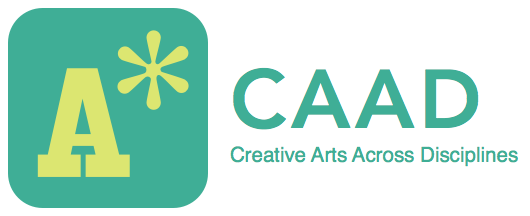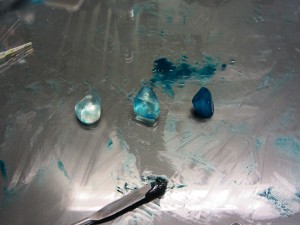Whatever kind of question you have in terms of your own research, you should never be afraid to ask someone outside your field for an answer.
A few weeks ago, Professor Marjolijn Bol came to Vassar College and shared her extensive knowledge of early modern art. On Monday night, she gave a lecture entitled “From Colored Crystals to Glowing Glazes: Oil Paint and the History of Gemstone Imitation” to the large audience gathered in Taylor 203. The following day, she led participatory labs for students during which she guided them through the synthesis of fictive fifteenth-century gems, as shown below.
During her visit, I was fortunate enough to talk with her about her work and the labs she intended to conduct with Vassar art and chemistry students. We met in the gorgeous Jade Room in Taylor Hall the morning before said labs. She was incredibly sweet, eager to speak on the matter at hand. Since one of the goals of CAAD is to encourage interdisciplinary collaboration between departments on campus, much of the interview focused on the intersection between art/art history and chemistry in her line of work. Below are snippets of her responses.
Regarding her course on Art Technological Source Research at the University of Amsterdam where she works:
[…] We investigate these recipes and their larger implications within art history and the history of science by trying to reconstruct them. […]
Regarding her background working with other colleges and universities, namely Columbia:
[…] I’ve just led a reconstruction lab at Columbia University, in the Making and Knowing Project, where students are engaged in how the history of making pertains to the history of knowledge and the history of science. […]
Regarding whether she planned on introducing the process of making the gems differently to Vassar art students versus chemistry students:
[…] I am very, very interested in how the art historians and the chemists communicate about this history, and how also the chemists can be of great help in terms of trying to understand the basics of some of the chemical processes that are described in the recipes on a level that a historian is not usually trained. […]
Regarding what she wants the students to take away from the experience working in tandem as opposed to just with their own discipline :
[…] As art historians interested in materials and techniques, we should really go to chemists and people doing physics and try to understand more about optics […]. And I think the other way around, people doing physics and chemistry [should know] where their field has come from and what their predecessors have also dealt with in terms of how do you write things down, how do you codify knowledge, how do you transmit knowledge, how do you build on existing scholarship and knowledge. […]
We truly hope Dr. Bol enjoyed her time here at Vassar and wish her well in her future endeavors. We also look forward to the next opportunity for students to collaborate across disciplines on campus.

